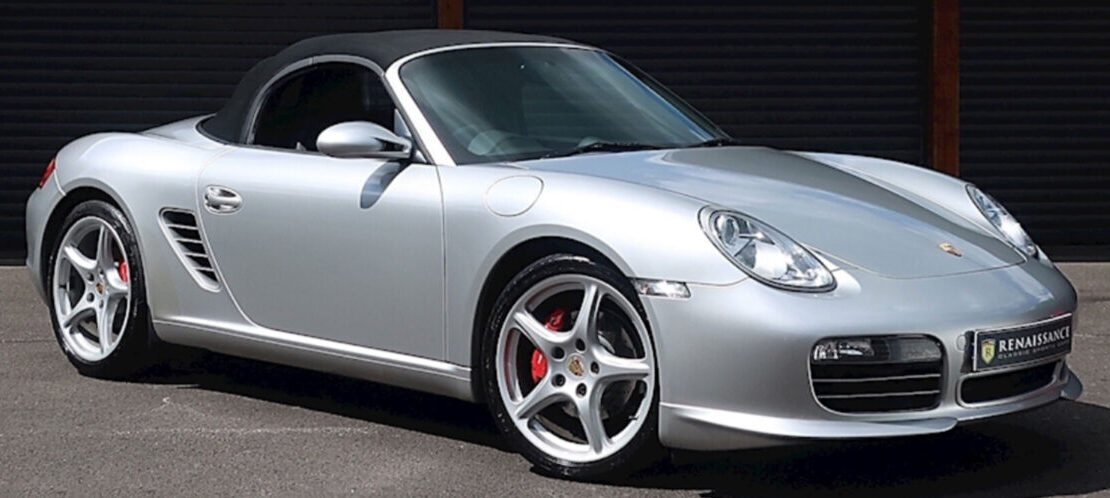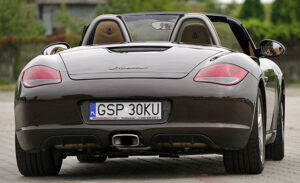Porsche Boxster: A 2023 standout in sports cars
1. Porsche Boxster: A strong performer in 2023’s sports car market
2. The 718 generation: four-cylinders vs. six-cylinders
3. The allure of six-cylinders
4. The 981 generation: Stability and opportunity
5. The 987.2 and 987.1 markets: Smaller segments, more fluctuations
6. The 986 generation: Consistency amidst fluctuations
9. Conclusion
Porsche Boxster: A strong performer in 2023’s sports car market
The Porsche Boxster has proven to be a remarkable contender in the sports car market, demonstrating minimal depreciation throughout 2023. This makes it an attractive option for those seeking a sports car with enduring value. However, not all Boxsters are created equal, with distinct differences between generations and models that deserve careful consideration. Some models were so popular that they maintained their value entirely. To understand these trends, we’ll delve into the various price trajectories and compare them to the broader market. Furthermore, we’ll explore why now might be an ideal time to consider purchasing a Boxster.
The 718 generation: four-cylinders vs. six-cylinders
Starting with the 718 generation, we first focus on the four-cylinder models. These saw an interesting price pattern: an increase until mid-2022, followed by a decline until 2023, and then a more gradual depreciation. Base models experienced a modest drop of 5.2%, translating to about $3,200. The S models saw a slightly higher depreciation rate of 6.8%, or $4,900. GTS models had a 6% decline, equating to $4,900 as well. The smaller market for the Boxster T caused more fluctuations and greater uncertainty, making a 6% depreciation rate a reasonable estimate.
Looking at the bigger picture, prices for these models are close to or even below inflation-adjusted levels from September 2020. This means that real prices are lower now than they were in late 2020, making the 718 generation particularly appealing.
The allure of six-cylinders
Moving on to the six-cylinder models, including the 4.0L GTS, Spyder, and the 25 Years Edition, we observe a different trend. Between mid-2022 and early 2023, these models saw a decrease, but during 2023, their depreciation rates aligned with the market. Notably, the Spyders and 25 Years Editions even experienced a slight price increase due to their discontinuation, uniqueness, and a general MSRP rise for Porsches. Specifically, the Spyders saw a year-over-year increase of 0.8% (around $11,000), while the 25 Years Edition and 4.0L GTS models saw decreases of 5.1% ($6,700) and 3.9% ($4,700), respectively. Adjusted for inflation, these numbers decrease by 2 to 3 percentage points.
The 981 generation: Stability and opportunity
The beloved 981 generation, encompassing Spyders, GTSs, S, and base models, showed relatively low depreciation rates in 2023. Base and S models closely followed market trends with an initial increase until 2022, a rapid decrease until mid-2023, and a slower depreciation thereafter. Base model prices dropped by 4.9% ($21,000), while S models fell by 6.7% ($35,000). GTS and Spyder models showed lower correlations to the market with depreciation rates of 6.1% and 1.6%, respectively. These figures highlight the importance of considering the context of higher price uncertainty.
The 987.2 and 987.1 markets: Smaller segments, more fluctuations
For the 987.2 market, the trends show a lower correlation to the general market trend, with a slight downward year-over-year price change: a 4.3% decrease for the S models, 9.4% for the Spyders, and 11% for the base models. These percentages, while seemingly high, are subject to significant uncertainty due to the small market size. Thus, focusing on the trend and confidence intervals is crucial.
The 987.1 market exhibited more stability, with base model prices increasing by 2.7% ($600) and S models by 3.9% ($1,000). Due to low supply, data for the R60 Spyder was excluded.
The 986 generation: Consistency amidst fluctuations
Surprisingly, trends for the 986 generation mirrored those observed earlier. Prices remained relatively stable, especially compared to other markets. After a dip following the summer of 2022, prices stabilized. Base models saw a 3.5% increase compared to last year, while S models experienced a 5.1% decrease. However, this decrease might be an overestimation due to a data point at the top of the confidence interval, suggesting a corrected change of 0 to 2%.
Summarizing the trends
When we compile these year-over-year changes into one graph, the 987.2 segment stands out due to its high uncertainty. Excluding this segment, Boxsters lost only 3.6% on average last year. The 718 four-cylinders lost 6%, which is expected as they are the newest cars. The 986 models and 718 six-cylinders, particularly the Spyders, showed remarkable resilience, often maintaining or even increasing in value.
A buyer’s market
The Porsche Boxster market did significantly better than the overall market, which saw an average decrease of 8%. Boxsters lost only 3.6% on average, with some models outperforming even further. These trends indicate that Boxsters remain a solid investment. Additionally, the percentage of unsold Boxsters has been falling, indicating increased market scarcity. Discounts for unsold cars have remained between 6 and 8%, making now an excellent time to buy a Boxster that has been sitting for more than three months.










